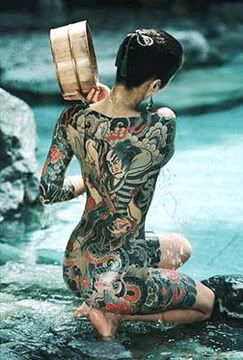
The only type of modification that I had seen done to the lip was piercings so when I came across pictures of the Mursi women with their lip plates I was in awe. It seemed a rather strange place to put a plate. The lip plate is a rite of passage into social adulthood and biological maturity. The lower lip is cut by the girl’s mother or another woman in her village around the age of 15 or 16. According to Turton, it is up to the girls to decide how much they want to stretch their lower lip; some will even get to 12 centimeters or more in diameter (Turton 1). Two myths exist as to why the Mursi women wear the lip plates and they are 1) it has to do with a bride’s wealth; the larger the lip plate, the more wealth, but this can not be true because in Turton’s article he says that girls marriages are predetermined before they even get the lip plate (1). And 2) this myth is that it was to keep the women from being traded as slaves. When the women were asked why they do it, they replied, “it is our custom” (Turton 3) and that it signifies adulthood. For whatever reason, it is a tribal identity that separates them from neighboring tribes who have similar forms of body modification. Mursi women are proud to wear their lip plates because it gives them a sense of cultural belonging. But now, unfortunately, it has also taken on the meaning of backwardness. Because of the uniqueness of the lip plates, people from all over the globe go to Africa to see the Mursi women. Tourists take pictures of the women and treat them like a zoo exhibit… most tourists pick the ones they want to take a picture of and do not even pay them fairly for the picture. This has caused the lip plates to become an economic asset because the women can make money for their families. Girls originally had the choice to make the lip plate however big they wanted but now that tourists have invaded, it is seen as better to have a bigger lip plate because it will give you more attention and help you earn money for your family. What upsets me is that “the Mursi know that the lip plate is seen as a sign of their backwardness by powerful outsiders, whether government officials or tourists” (Turton 5). I do not think what they are doing is backwards and what gives anyone the right to make others feel inferior and how they identify themselves as a people is wrong. I understand the lure of seeing something different from your own cultural practices but at least treat them as equals and not as an exhibit and cheat them of monetary gain. The Mursi women wear the plates for cultural identity, beauty, and to show rites of passage; there is no need to add the connotation of backwardness to its original meanings.
Work Cited
Turton, David. “Lip-plates and ‘the people who take photographs’ uneasy encounters between Mursi and tourists in Southern Ethiopia” Anthropology Today, vol. 20,issue 3 pg (1-6)<http://www3.interscience.wiley.com/cgi-bin/fulltext/118773837/PDFSTART?CRETRY=1&SRETRY=0>
Work Cited
Turton, David. “Lip-plates and ‘the people who take photographs’ uneasy encounters between Mursi and tourists in Southern Ethiopia” Anthropology Today, vol. 20,issue 3 pg (1-6)<http://www3.interscience.wiley.com/cgi-bin/fulltext/118773837/PDFSTART?CRETRY=1&SRETRY=0>

